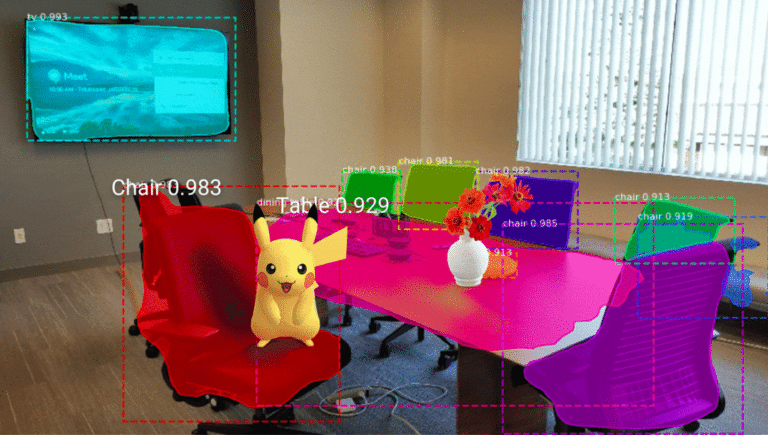
This is the latest in ARtillry’s series, AR Business Models. It examines revenue generation strategies developing among today’s AR leaders. See the rest of the series here.
One of XR’s key accelerants examined in our 2018 predictions was ‘unifying technologies.’ Also known as building blocks, these work towards democratizing advanced XR capability for developers. Examples include things like Google Blocks, Amazon Sumerian and Adobe Aero.
Even better examples are ARkit and ARCore themselves. They standardize AR tools and handle a lot of the back-end heavy lifting so that developers can focus instead on apps and business models. And they create common languages which accelerate front-end development.
But where this democratization concept could have the most impact is with the AR cloud. Google has started to move in this direction by offering its Maps API as a tool for XR developers to build geographically-accurate and interactive graphics. And Apple did something similar last week.
https://youtu.be/OrjIclWmliA
AR Cloud as a Service
But the company to really take this to the next level is Niantic. The Pokemon Go and Ingress creator recently turned its AR architecture into a platform on which others can build apps. This could be the start of a model we’re calling “AR as a Service” (albeit, an unfortunate acronym).
Known as Real World Platform, it productizes the underlying code base for Niantic’s popular AR games. This not only achieves the “democratization” espoused above, but does so in a way that’s similar to the biggest democratization tool the tech world has probably ever seen: AWS.
In other words, just like AWS, Niantic built its engine primarily to drive its own product. But a by-product was the realization that it can be its own platform. And like AWS, it could be a highly scalable revenue stream, making it opportunistic for Niantic and transformative to the industry.
“AWS and GCP weren’t built as compute platforms for everybody,” said Niantic CTO Phil Kelsin at AWE in May. “They were built to support the applications of Amazon and Google. Then they decided ‘we have excess capacity let’s turn it into something that our users can use.'”
In fairness, the real AWS of AR could be… AWS. Amazon Sumerian exists under the AWS umbrella as an XR dev tool. It’s shaping up to be a powerful asset for enterprises building immersive apps, but its place in the ecosystem will be different than Niantic’s AR cloud approach.

Doubling Down
Of course, all of the above is conceptual: The real value of Niantic’s Platform will lie in its execution and functionality. One thing you may be thinking is that Pokemon Go is a primitive form of AR, so will it spawn a valuable platform? That’s where Niantic’s acquisition spree comes in.
Real World Platform is strategically timed to incorporate IP that Niantic has been scooping up and adding to its already-scalable infrastructure. That includes Escher Reality (multi-player & social AR) and Matrix Mill (occlusion and computer vision), which contribute to its “Planet Scale AR.”
The idea is to have more robust computer vision and machine learning to contextualize real world items. Then, scene mapping IP from Matrix Mill can infuse graphics in dimensionally accurate ways, and Escher’s social AR capabilities bring collaborative features. And it won’t stop there.
Niantic is in a strong position with not only momentum and brand equity from Pokemon Go, but also lots of cash. It’s now using that to double down on IP and positioning as a true AR tech leader. CEO John Hanke has even hinted at crowdsourced 3D spatial mapping, a la 6D.ai.
The World is a Big Place
It’s also important to note that assembly and productization of AR cloud data won’t be a job for one company. There will be many proprietary data sources on the AR cloud, just like there are on the web. Niantic will be one, along with Google, Apple and focused startups (speaking of 6D.ai).
The question is how will business models develop? 6D.ai has a smart scaling strategy through an API approach that incentivizes AR cloud data collection through a Waze-like value-tradeoff (give some, get some). Google and Apple meanwhile apply data from their core mapping apps.
And now comes Niantic, which will license an AR Cloud platform built from its own scaled-up game development. And it will improve as those games themselves do. Don’t forget, Harry Potter: Wizards Unite is forthcoming. This could all come together in a sort of “AR cloud as a service.”
ARkit and ARCore don’t fall into this category because they’re free toolkits for developers. Google and Apple are motivated to seed AR apps, which they’ll monetize in other ways. But for players like Niantic, specialized IP can be productized as a software/service.
The other benefit could be Saas-like packaging/pricing. Like enterprise AR, this will deliver AR capability as a monthly license. That makes it cash-flow friendly for startups, while boosting retention and recurring revenues for providers. We’ll just have to think of a better acronym.
For deeper XR data and intelligence, join ARtillry PRO and subscribe to the free ARtillry Weekly newsletter.
Disclosure: ARtillry has no financial stake in the companies mentioned in this post, nor received payment for its production. Disclosure and ethics policy can be seen here.
See the previous posts in this series here.
